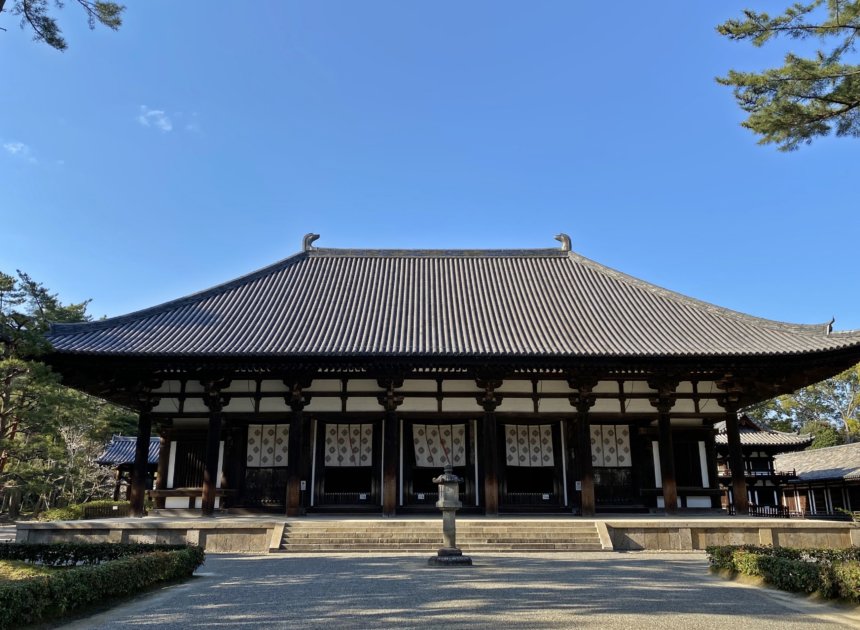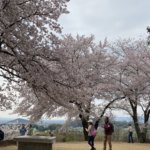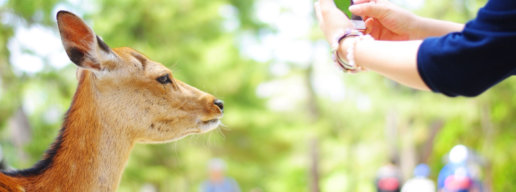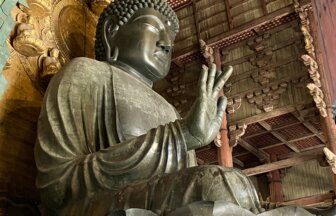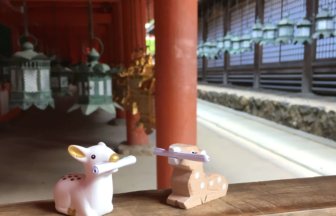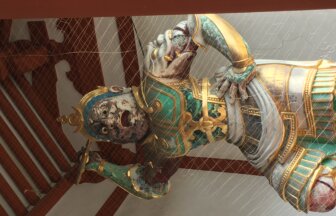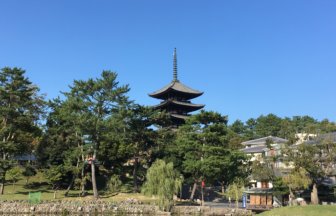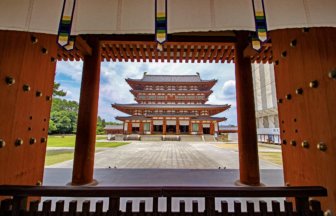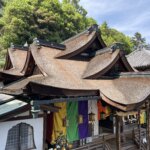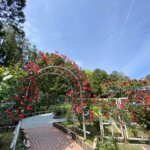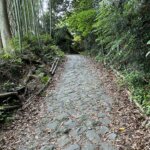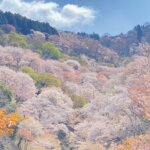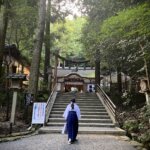If you visit Toshodai-ji Temple after Yakushi-ji, which is a popular route many tourists follow, you may notice the difference in the atmosphere between the two temples.
It is impressively calm and quiet here. The temple buildings are surrounded by a small forest and you will hear the sound of birds singing. Most of the parts of the buildings are bare wood. It is dark even in the Main Hall. Everything is modest and simple. Wabi-Sabi, traditional Japanese aesthetics coming from simplicity and humbleness, is fully represented here. This may be the reason why many Japanese people, including myself, are fascinated by this temple.
History
Jianzhen (688-763), a famous Chinese priest who propagated Buddhism in Japan, was invited by an emissary from Emperor Shomu in 742. The Imperial Court intended to establish an ordination system and needed a high priest who was able to give ordination in Japan.
Despite the opposition of people around him, Jianzhen determined to cross the East China Sea to Japan. A voyage across an ocean was very tough in those days, as you could easily imagine. He failed five times and even lost his eyesight, but his determination was not shaken. He finally landed in Japan on his sixth try.
He built the first ordination platform in Japan at Todai-ji Temple to preach precepts and give ordination to former Emperor Shomu and many others. After five years with Todai-ji, he was freed from his official duty and given land in the west of Nara in 759, where he built an ordination platform again. This marked the beginning of the history of Toshodai-ji Temple.
Main Hall (Kondo)
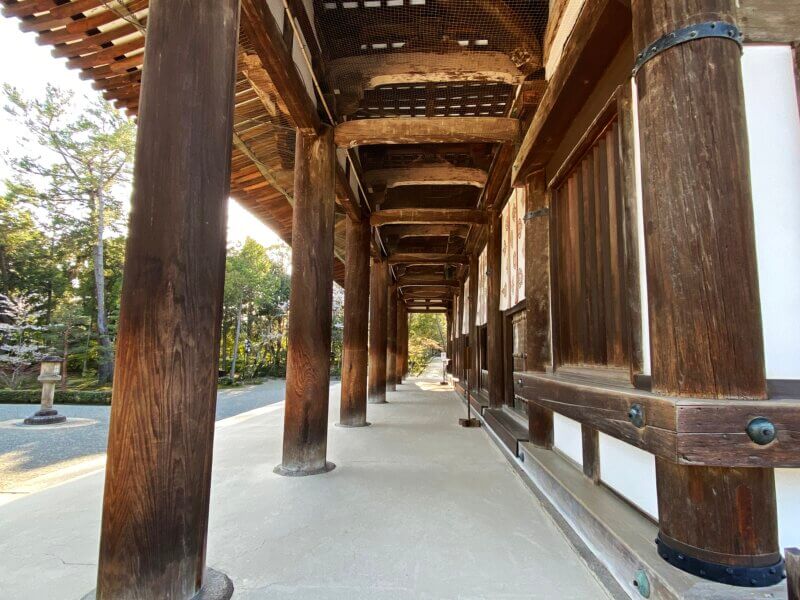
When you enter the temple gate, you will find an approach stretching straight in front of you and the Main Hall standing at the end will come into sight (the picture at the top of the page). Built in the 8th century, the structure and design themselves are simple and sober. However, the dignified appearance, especially of the huge tiled roof, will give you a strong impression. Eight pillars lined at the front of the hall are shaped with an entasis, a convex curve, which implies that the construction technique applied to Greek temples was conveyed all the way to Japan along the Silk Road. It houses nine Buddha statues including three famous huge ones; Vairocana Buddha, Thousand-Armed Kannon and Yakushi Nyorai. The hall itself and all nine statues are National Treasures.
Rushana Butsu (Vairocana Buddha) (center)
The principal image of Buddha is about 3 meters tall, the pedestal is 2 meters high and the height of the halo on its back is over 5 meters. It has both plumpness and magnificence, creating a sense of stability. The decoration on the halo may catch your eye. Each relief is a small Buddha and 862 Buddhas are on the halo today. It is said that it originally had one thousand.
Thousand-Armed Kannon (left)
There are only three Buddha statues in Japan that actually have or had a thousand arms. This is one of the rarest and most valuable Kannons. It has 42 large arms, most of which are holding treasures and tools, and 911 small arms, totaling 953. It is said that it had one thousand arms when built. In spite of the number of arms it has, the Kannon with a serene facial expression still maintains a natural and balanced body shape as a whole.
Yakushi Nyorai (Buddha of Medicine) (right)
With its half-closed downcast eyes, the Nyorai looks calm and dignified. During repairs in 1972, three different old coins were discovered in the hollow of the left palm. One of them was found to be minted in 796 according to the Chinese characters cast on the surface, suggesting that the statue was made later than the other two.
Visit the official Toshodai-ji website to look at the pictures of the statues.
https://toshodaiji.jp/about_kondoh.html
Lecture Hall (Kodo)
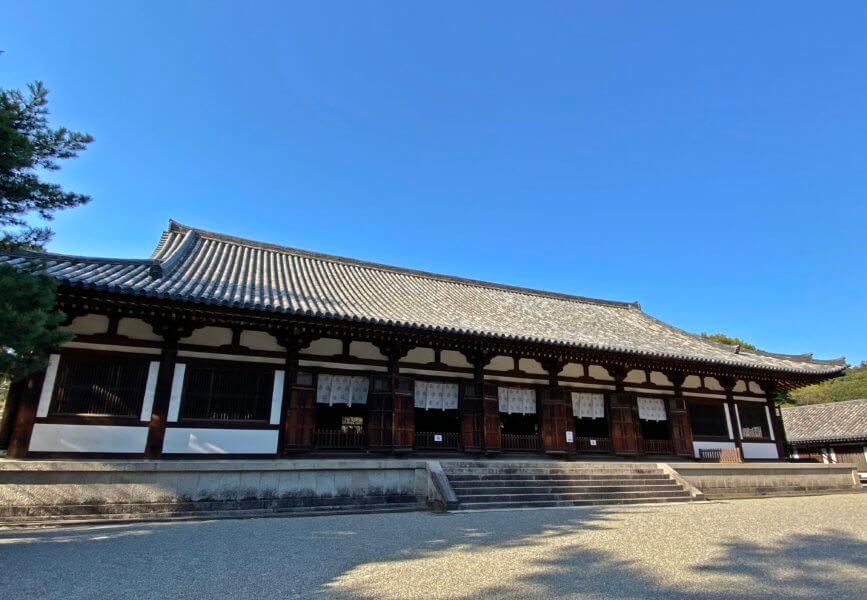
Although many parts were repaired and modified around the 13th century, the hall was originally built in the 8th century as a part of the Heijo Palace and then moved here when Jianzhen opened this temple. This is the only surviving architectural remains of the Palace.
Inside the hall, two pieces of furniture with a roof supported by four posts are placed in front of the platform where Buddha statues reside. They are elevated seats for two priests at a lecture on Buddhist scriptures; one reads a sutra and the other explains the meaning.
Miroku Nyorai (center)
Each individual facial feature is large and lines drawn on the face, such as eyebrows, eyelids and mustaches, are clearly visible. All these constitutes a powerful facial expression. A gem is embedded between the eyebrows, which sometimes glitters, depending on the viewing angle. The halo on the back is described as flames and you will see small Buddha statues and heavenly maidens on it.
Jikoku-ten (right) and Zocho-ten (left)
The two plump and powerful wooden statues were built in the 8th century. Zocho-ten is said to be carved by a Chinese sculptor, following the style of the Tang Dynasty.
Both were designated as National Treasures in 2019.
Visit the official Toshodai-ji website to look at the pictures of the statues.
https://toshodaiji.jp/about_koudoh.html
Ordination Platform with Stupa (Kaidan)
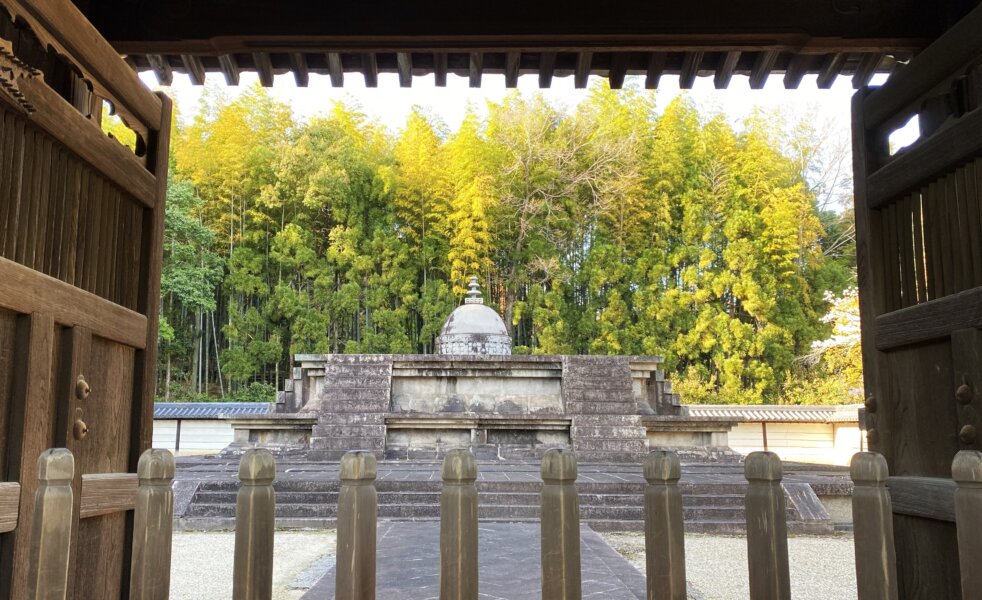
Kaidan is a place for a Buddhist initiation ceremony and therefore very important considering the reason why this temple was built. It was originally built at the time as the foundation of the temple, but the building was lost in a fire and only the stone foundation has survived to this day. The stupa, modelled after the Great Stupa of Sanchi, India, was added in 1978.
Jianzhen’s Tomb
Do not be satisfied with seeing the Main Hall and Lecture Hall only! My favorite place in Toshodai-ji is the pathway and moss garden on the way to Jianzhen’s tomb. Surrounded by a small forest, you will be able to immerse yourself in the quietness, which will only be disturbed by songs of birds, and see the shadows cast on the moss carpet by the trees.
At the end of the pathway, there is a very small hill and it is a tomb of the priest who founded the Temple –Jianzhen. In front of the tomb, Keika trees, sent from the hometown of Jianzhen, are planted and their white flowers bloom out in spring.
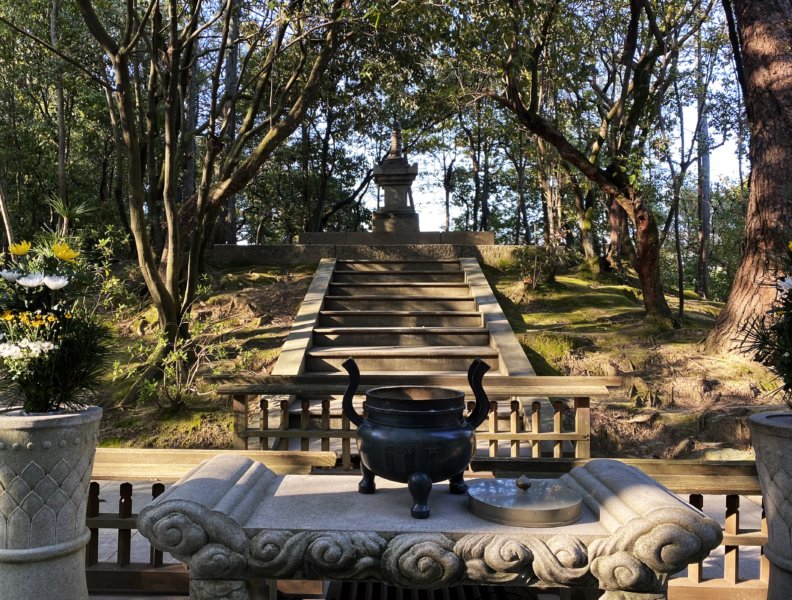
Mieido Hall
A seated statue of Jianzhen, which is said to be the oldest portrait sculpture in Japan, is enshrined here. Rooms in the hall are decorated with sets of exquisite sliding doors (fusuma) painted by Higashiyama Kaii, one of the most renowned Japanese-style painters in the 20th century.
* The statue of Jianzhen is open to the public only from June 5 to 7 every year.
Exhibition Hall (Shin-hozo)
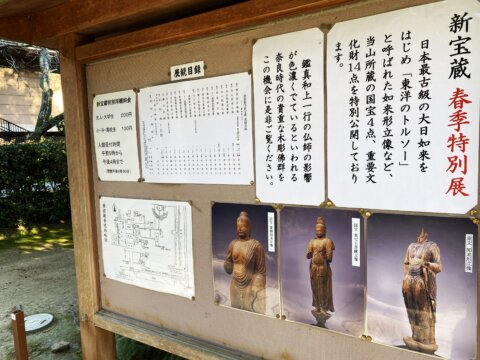
Notice board of the Exhibition Hall
Many treasures of the temple are exhibited here. A unique one is a standing Nyorai, whose head and hands are lost. It is called Torso of the East. Its beauty is composed of exquisite curves and has attracted many people to this day.
Raised-floor Storehouses (Kyozo and Hozo)
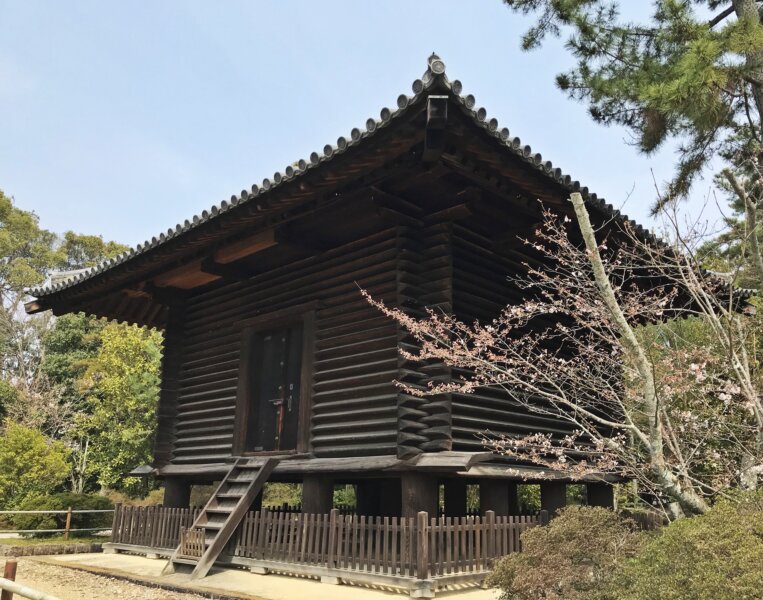
Hozo
Both storehouses are National Treasures.
Information:
Hours:
8:30 to 17:00
* Enter 30 minutes earlier than the closing time.
Admission:
Adult: 1,000 yen
Address:
13-46, Gojo-cho, Nara City 630-8032 Japan
* You are always asked to check information on the official website before you visit.
https://toshodaiji.jp/english/index.html
(Official Toshodai-ji website)
Access:
A 10-minute walk from Nishinokyo Station of Kintetsu Railway
For detailed access information, see the Recommended Route of Nishinokyo Area page.
Last updated: September 29, 2022
Text by: Yumi
